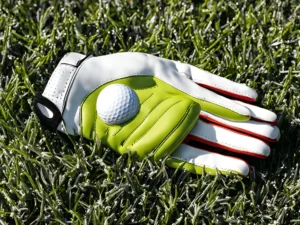This article aims to provide an in-depth look at golf ball retrievers, exploring their history, hidden features, and technological advancements. By understanding these hidden champions, you’ll not only appreciate their value but also see how they can transform your game, saving you time, money, and setback on the course.
Introduction:
In the strategic world of golf, every tool in a golfer’s bag has a purpose. But one tool, often overlooked, holds the power to save both time and money while enhancing the overall experience: the golf ball retriever.
This article takes you on a journey through the evolution of golf ball retrievers, highlighting their innovative designs and the unique ways how they impact the game.
Prepare to uncover the secrets of this game-saving tool and see how it can transform your time on the course.
Take a look actually what is golf ball retrivers:
Defining a Golf Ball Retriever: The Ultimate Golfing Companion
A golf ball retriever is a specialized tool which designed to help golfers to recover their balls from difficult-to-reach areas such as water hazards, and other inaccessible spots on the golf course. This handy device extends the reach of a golfer, making it possible to retrieve balls without stepping into precarious or prohibited areas.
Take a look at its unique features:
Unique Features of Golf Ball Retrievers:
Telescopic Design:
Adjustable Length: The telescopic pole can extend to different lengths, typically up to 15 feet or more,which allow golfers to reach balls in deep water.
Compact Storage: When retracted, the retriever becomes compact and easy to store in a golf bag.
Lightweight and Durable Materials:
Fiberglass Construction: Modern retrievers are made from lightweight yet durable materials such as aluminum or fiberglass which provide strength without adding too much weight.
Corrosion-Resistant: These materials are often treated to resist corrosion, even with regular exposure to water and outdoor elements.
Advanced Gripping Mechanisms
Claw-Like Grips: Some retrievers feature claw-like mechanisms that securely grasp the ball without damaging it.
Basket Design: Others use a basket to capture the ball, often lined with soft, non-abrasive materials to protect the ball’s surface.
Spring-Loaded Mechanisms: High-end models may include spring-loaded grips that automatically secure the ball upon contact.
Non-Slip Grasps: Handles are planned with non-slip materials to guarantee a firm hold, indeed in damp conditions.
Comfortable Design: Ergonomic shapes reduce hand fatigue and enhance control during use.
Mechanical Innovations
GPS Integration: A few progressed retrievers come with GPS capabilities, permitting golfers to find their balls utilizing smart phone app.
Cameras: High-resolution cameras provide live feeds to help visually locate balls in murky water or thick rough.
Sensors: Sensors can detect when a ball is securely gripped and alert the user via a connected app.
Eco-Friendly Features
Recycled Materials: As sustainability becomes a priority, some retrievers are made from eco-friendly or recycled materials, reducing their environmental impact.
These unique features make golf ball retrievers an indispensable tool for golfers, enhancing their game by saving time, reducing frustration, and even contributing to environmental conservation.
The Genesis of Golf Ball Retrievers: From Simple Tools to High-Tech Gadgets:
A Unique Historical Perspective:
The Humble Beginnings
In the early days of golf, dating back to the 15th century, the game was played on the rough terrain of the Scottish coast. Back then, golfers had to contend with all manner of natural obstacles, including marshes, rocky outcrops, and dense shrubbery. Losing a ball was common, and retrieving it was a matter of improvisation and ingenuity. Players would use long sticks or even their clubs to prod around for their lost balls, often damaging the balls or losing them entirely.
The Industrial Era: Standardization and Mass Production
As golf continued to grow in popularity throughout the 1960s and 1970s, the need for more efficient and reliable retrievers became apparent. Companies began producing models with extendable poles, allowing golfers to reach balls in water hazards and thick roughs more easily. The materials also improved, with lightweight aluminum and fiberglass replacing heavier metals and wood, making the retrievers easier to handle and more durable.
The Technological Revolution
The turn of the 21st century brought with it a wave of technological advancements that transformed golf ball retrievers from simple tools into sophisticated gadgets. Modern retrievers now feature telescopic designs that can extend up to 15 feet or more and collapse into a compact size for easy storage. The gripping mechanisms evolved to include spring-loaded claws, scoops, and baskets made from soft, non-abrasive materials to protect the balls.
Origins of Golf Ball Retrievers
The need to retrieve lost golf balls is as old as the game itself. In the early days of golf, players would use makeshift tools like long sticks or homemade scoops to fish balls out of water hazards or thick rough. These rudimentary methods were effective but lacked the efficiency and convenience of modern retrievers.
The first commercial golf ball retrievers appeared in the mid-20th century, coinciding with the post-war boom in golf’s popularity. Early models were simple, often consisting of a metal pole with a scoop or basket at the end. As the game evolved, so did the technology, leading to the diverse and sophisticated range of retrievers available today.
Types of Golf Ball Retrievers
There are several types of golf ball retrievers, each designed to suit different needs and preferences:
Telescopic Retrievers:
These are the most often and bending type.
They can extend to various lengths, making them useful for reaching balls in deep water or high places.
Compressed and simple to store in golf bag.
Foldable Retrievers:
Designed for comfort and portability.
They overlay down into a compact size, making them easy to carry around the course.
Ideal for golfers who prefer minimal gear.
Scoop-Style Retrievers:
Feature a scoop or basket at the end of the pole.
Effective for retrieving balls from water hazards and sand traps.
Simple to use, but may require some skill to maneuver.
Claw-Style Retrievers:
Equipped with a claw mechanism to grab the ball.
Excellent for picking up balls in bushes, tall grass, or other difficult terrain.
Often more precise but may take longer to master.
The Top Unique Benefits of Using a Golf Ball Retriever
1. Cost Savings
Golf balls can be expensive, especially for avid golfers who play frequently. A golf ball retriever allows players to recover lost balls, significantly reducing the need to constantly purchase new ones. Over time, this can lead to substantial savings, making the initial investment in a retriever well worth it.
2.Environmental Conservation
Using a golf ball retriever contributes to environmental sustainability. Lost balls can accumulate in natural areas, causing harm to local ecosystems and wildlife. By retrieving these balls, golfers help maintain the natural beauty and health of the course, promoting a cleaner and more eco-friendly environment.
3. Time Efficiency
Searching for lost balls can be time-consuming, especially in water hazards or dense roughs. A golf ball retriever allows for quick and easy recovery, saving valuable time during a round of golf. This efficiency helps to continue the flow of play, enhancing the overall golfing experience.
4.Enhanced Safety
Golf courses often have areas that are difficult or dangerous to access, such as deep water hazards or steep slopes. A retriever extends the golfer’s reach, allowing them to safely recover balls without risking injury or venturing into potentially hazardous areas.
Tips for Choosing the Right Golf Ball Retriever
- Length and Reach:
- Consider how far you typically need to reach. Telescopic retrievers are great for extended reach.
- Portability:
- Look for a retriever that fits comfortably in your golf bag and is easy to carry around the course.
- Durability:
- Choose a retriever made from high-quality materials that can withstand regular use and various weather conditions.
- Ease of Use:
- Consider the design and mechanism of the retriever. It should be easy to use and effective in retrieving balls.
Personal Stories and Testimonials
To truly appreciate the impact of golf ball retrievers, it’s worth hearing from those who use them regularly. Here are a few personal stories and testimonials from golfers who have found value in these tools:
1. John’s Story
John, a retiree and passionate golfer, found himself frequently losing balls in the water hazards of his favorite course. Frustrated by the expense and inconvenience, he invested in a high-quality telescopic retriever. “It’s been a game-changer,” he says. “I no longer worry about losing balls, and it’s saved me a lot of money. Plus, it’s kind of fun to fish them out.”
2. Lisa’s Experience
Lisa, an amateur golfer and environmental enthusiast, uses her retriever not just for her own balls but to clean up the course. “I see it as my commitment to keeping the course beautiful,” she clarifies. “It’s satisfying to know I’m playing a role in the environment during enjoying my game.”
3. Mike’s Testimonial
Mike, a semi-professional golfer, emphasizes the competitive edge a retriever can provide. “In tournaments, every ball counts. Having a reliable retriever means I can recover from a bad shot without losing momentum. ”
CONCLUSION:
Golf ball retrievers may seem like a small part of the golfing experience, but their impact is substantial. From their humble beginnings to the high-tech innovations of today, these tools have evolved to become indispensable for golfers of all levels. They save time, money, and frustration, enhance the environmental sustainability of the sport, and even contribute to the financial well-being of golf courses.
Next time you’re out on the course and find your ball in a tricky spot, remember the humble retriever. It’s more than just a tool—it’s a testament to the ingenuity and passion that make golf such a beloved sport. Whether you’re a weekend warrior or a seasoned pro, a golf ball retriever is an investment that pays dividends in many ways. So, embrace this hidden champion and let it enhance your game, one retrieved ball at a time.
Losing golf balls (relate link ) can be an irritating – and costly – propensity to drop into and, if you’re frequently finding water risks, you likely feel less slanted to utilize a way better, costly golf ball.That’s where the humble golf ball retriever, one of the best golf extras you can purchase, comes into its claim.Ready to enhance your golfing experience? Discover the ultimate golf ball retrievers on that website and never lose another ball again. Buy now and transform your game!
FAQ:
What length should a golf ball retriever be?
A golf ball retriever should ideally extend up to 15 feet to effectively reach balls in water hazards and deep roughs.
Is there a penalty for using a golf ball retriever?
No, there is no penalty for using a golf ball retriever in golf. They are considered a legal and useful tool for recovering lost balls.
When was the golf ball retriever first used?
The golf ball retriever was first used commercially in the 1950s and 1960s. Early models evolved from simple homemade tools to more efficient, commercially available devices.
How to use the golf ball retriver exactly?
To use a golf ball retriever, extend the pole, position it over the ball, and lower it to grasp the ball. Then retract the pole to lift the ball out and remove it.
Read More Article
- The Golf Ball Grinder: A Unique Tool for Every Golf Enthusiast
- The Art of Display: Creating the Perfect Golf Ball Display Case
- Vice Golf Balls Review: Performance, Quality, and Value Explored
- The Golf Ball Slide Mastery: Expert Tips for Optimal Control
- 2024: The Journey of Lost Golf Balls – Beyond the Fairway
- The Average Age of Golfers In Depth Look 2024
- Golf Club Selection Tips to Help You Choose the Right Club
- Golf Gloves Essentials 2024: Boost Your Game
- Discovering Your Game: Golf Ball Washers’ Secret Benefits for 2024
Credit by the help of this article




